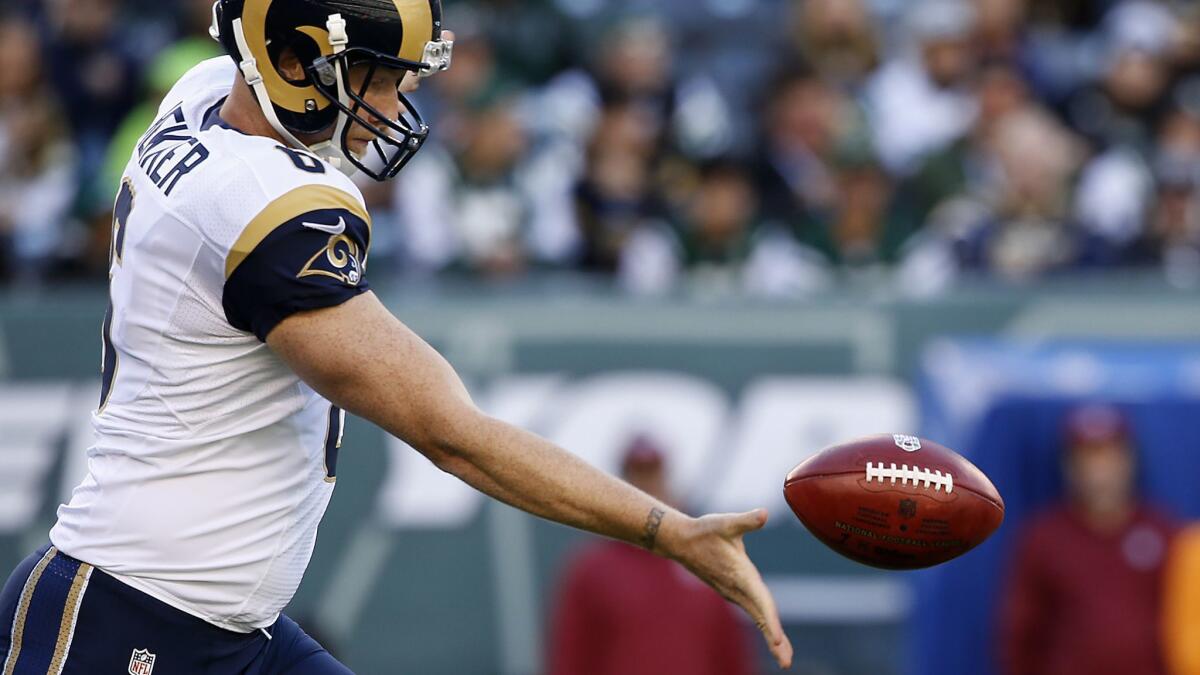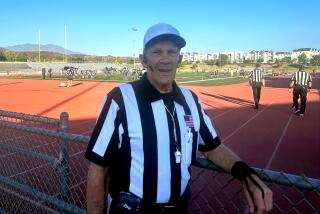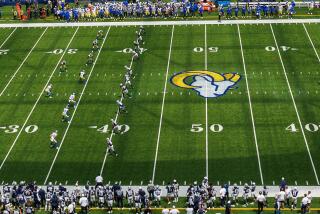Ask Farmer: How can officials accurately mark where a punt that flies out of bounds actually crossed the sideline?

Have a question about the NFL? Ask Times NFL writer Sam Farmer, and he will answer as many as he can online and in the Sunday editions of the newspaper throughout the season. Email questions to: sam.farmer@latimes.com
How can officials accurately mark where a punt that flies out of bounds actually crossed the sideline? They do a run up the sideline and miraculously point to a spot where it crossed over. Can you demystify this?
Fred Baranowski
San Diego
Farmer: It’s an interesting process, and one that isn’t widely known.
A lot of people think it’s the official on the sideline who makes that determination, but it’s actually the referee, who is standing back near the punter and often the farthest official from the football.
It’s a little like standing at the tee box, trying to keep your eyes fixed on the precise spot your golf ball sailed into the trees.
Basically, it’s geometry. The referee goes to or near the spot where the ball was punted and watches its flight, drawing an imaginary plumb line between that point and where the ball intersects the sideline.
The sideline official raises his hand and comes up the sideline, indicating he’s ready to take instruction from the referee.
The referee, in turn, raises his hand and only drops it when the sideline official has reached the spot where the ball intersected the plane of the sideline. Then, the ball is spotted.
“If you stand where the punt was made, you have an exact line because you’re tracking the ball,” former referee Mike Carey said. “People cry about it a lot, but it really is very accurate.”
But in a game of inches, and certainly one of yards, it’s a somewhat crude method of measurement.
I asked Rich McKay about the procedure. He’s president of the Atlanta Falcons and chairman of the league’s competition committee.
“I would say it’s a very inexact science,” McKay said. “It’s very difficult. Now, [the referee is] in the right position, where he is in the angle off the side of the punter. So he can see it. But still, to make that determination is very difficult.”
This raises the whole chip-in-the-ball debate.
Why doesn’t the league use all the technology at its disposal to ensure as much precision as possible?
“You could do a lot of things,” McKay said. “Question is, at what point does it become a waste of time?
“The good thing is, it doesn’t involve a first down. It really just involves a drive start. So if it ends up being two yards, it’s not affecting a first down. It’s affecting field position.
“So that’s why we’ve never put any more — quote — science into it.”
More to Read
Go beyond the scoreboard
Get the latest on L.A.'s teams in the daily Sports Report newsletter.
You may occasionally receive promotional content from the Los Angeles Times.











